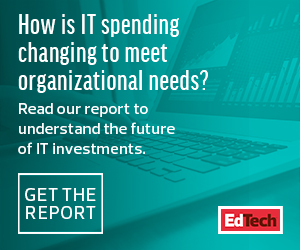The Keys to Cybersecurity: Cloud Security and Cost Reduction
Although cybersecurity has always been a never-ending concern for IT leaders, it’s more crucial than ever in today’s remote learning and working landscape. In March, the FBI issued a warning that teleconferencing solutions and online classrooms are particularly vulnerable to hijacking.
As colleges across the country see a spike in phishing and ransomware attacks, higher education institutions are racing to secure the remote workforce. According to the CDW and IDG survey, 35 percent of education decision-makers say the most important technologies for risk mitigation are the ones that support cloud and remote learning security. Meanwhile, 37 percent say third-party security assessments also remain a top priority.
In addition, higher education respondents (46 percent) were significantly more likely than K–12 respondents (26 percent) to cite data analytics as a top risk mitigation solution.
So how are colleges and universities going to afford to strengthen their security measures? That is the million-dollar question. The CDW and IDG survey found that 39 percent of education leaders see identifying cost savings as one of the most important steps they can take to improve their risk posture over the next two years. That way, they can reinvest the dollars into security enhancements.
Furthermore, 38 percent say that faculty and staff training remains a high priority. According to Mimecast, employees who haven’t had a recent security awareness training are more than five times more likely to click on malicious links. To protect today’s virtual and physical classrooms, it is imperative that faculty and staff undergo robust security awareness trainings on a regular basis.
MORE ON EDTECH: Learn how to prepare for campus readiness while cutting costs.
Data and Collaboration Tools Increase Workplace Productivity
In the near future, higher education institutions will likely have some staff work from home while others return to campus. To make this new arrangement possible, colleges and universities need powerful collaboration tools.
CDW and IDG survey findings reveal that such tools have become more widely used in the past year and will continue to play a large role in driving productivity, with 42 percent of respondents saying they plan to invest in collaboration to support workplace productivity, flexibility and engagement.
Having meaningful data insights is also seen as essential to productivity. After all, data analytics is what converts readily available data into actionable next steps. According to the CDW and IDG survey, 42 percent of education leaders see extracting more value from their data as a top investment priority.
From boosting admissions to keeping students and faculty safe after campus reopens, it has become more important than ever that universities and colleges make better, data-informed decisions.











